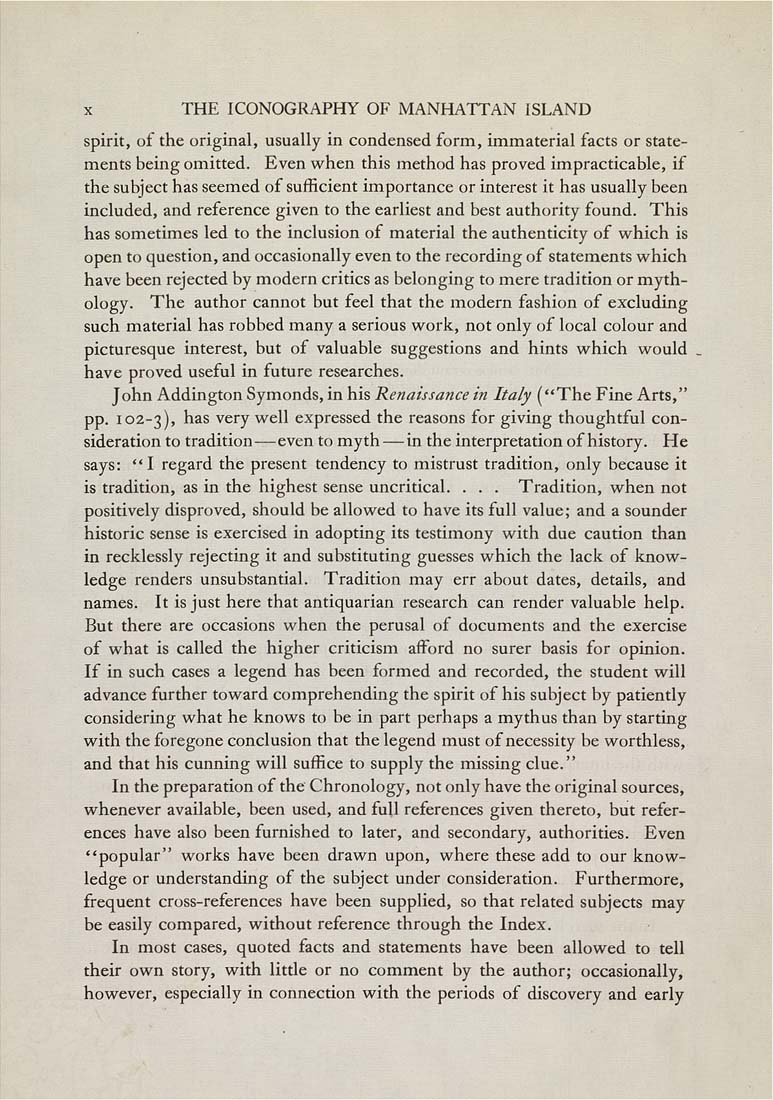the iconography of MANHATTAN ISLAND
^
spirit, of the original, usually in condensed form, immaterial facts or state¬
ments being omitted. Even when this method has proved impracticable, if
the subject has seemed of sufficient importance or interest it has usually been
included, and reference given to the earliest and best authority found. This
has sometimes led to the inclusion of material the authenticity of which is
open to question, and occasionally even to the recording of statements which
have been rejected by modern critics as belonging to mere tradition or myth¬
ology. The author cannot but feel that the modern fashion of excluding
such material has robbed many a serious work, not only of local colour and
picturesque interest, but of valuable suggestions and hints which would _
have proved useful in future researches.
John Addington Symonds, in his Renaissance in Italy ("The Fine Arts,"
pp. 102-3), ^^^ ^^^y v^&W expressed the reasons for giving thoughtful con¬
sideration to tradition—even to myth — in the interpretation of history. He
says: "I regard the present tendency to mistrust tradition, only because it
is tradition, as in the highest sense uncritical. . . . Tradition, when not
positively disproved, should be allowed to have its full value; and a sounder
historic sense is exercised in adopting its testimony with due caution than
in recklessly rejecting it and substituting guesses which the lack of know¬
ledge renders unsubstantial. Tradition may err about dates, details, and
names. It is just here that antiquarian research can render valuable help.
But there are occasions when the perusal of documents and the exercise
of what is called the higher criticism afford no surer basis for opinion.
If in such cases a legend has been formed and recorded, the student will
advance further toward comprehending the spirit of his subject by patiently
considering what he knows to be in part perhaps a mythus than by starting
with the foregone conclusion that the legend must of necessity be worthless,
and that his cunning will suffice to supply the missing clue."
In the preparation of the Chronology, not only have the original sources,
whenever available, been used, and full references given thereto, but refer¬
ences have also been furnished to later, and secondary, authorities. Even
"popular" works have been drawn upon, where these add to our know¬
ledge or understanding of the subject under consideration. Furthermore,
frequent cross-references have been supplied, so that related subjects may
be easily compared, without reference through the Index.
In most cases, quoted facts and statements have been allowed to tell
their own story, with little or no comment by the author; occasionally,
however, especially in connection with the periods of discovery and early
|








